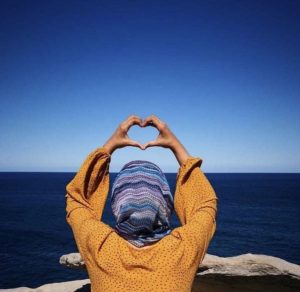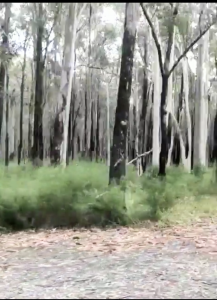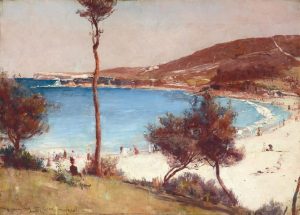 ‘Remember ideas become things’. When my son brought a promising blank notebook for me from one of his overseas trips, with these words written across its front cover, I couldn’t help wondering which of the ideas had become things for me.
‘Remember ideas become things’. When my son brought a promising blank notebook for me from one of his overseas trips, with these words written across its front cover, I couldn’t help wondering which of the ideas had become things for me.
It didn’t take me long to stumble upon the basic questions that I have continued to ask myself over time, Who am I and Where am I – questions which have continued to gain existential significance with the passing of days, months, years, decades and so on. I have been happy to settle with the suggested answer to both questions, ‘I am here’. I don’t remember when or where I came across the idea, both the questions and the answer, but it has stayed with me ever since. An idea, a mantra, a truth, that rids me of the need to see and categorize my Self into the different divisions of Otherness – gender, race, ethnicity, class, religion, language, country of origin and more – that hyphenate and divide my identity into unrecognizable and untraceable bits and pieces. And has helped me accept and transcend to some extent
The fact of [my] division
And the inevitability
Of each succeeding
Split
(Khan, 2021, p. 42, 1 is not 2)
In many ways, over the years, I have come to accept that this answer to both questions, Who am I? Where am I? is an idea whose significance, like that of irony, as M.C. Mueke so beautifully put it in his book, The Compass of Irony can never be truly grasped. ‘Getting to grips with irony seems to have something in common with gathering the mist: there’s plenty to take hold of if only one could. A phenomenon so nebulous that it disappears as one approaches it.’ And so, misty eyed, many a times I have settled in snugly with the idea, I am here, on sad afternoons, like a cat in its basket, tired of the need to prod and poke and play with its nebulous anonymity. I let it remain, like a ball of tangled wool, which I cannot really untange and ascertain the identity of the split ‘I’ who ‘[is] here’. Many of my previous reflective pursuits in navigating the not-so-perfect split have never been able to truly identify the ‘I’ who experiences the multiplicity of my many split selves.
Or at least that’s what I thought it did, until recently.
A slightly different kind of inquiry into another dimnesion of the two questions, Who am I? Where am I? has recently come my way, like the end of a thread to a tangled ball of wool, teasing me to pull it open.
“Would you like to design a 10-week programme for the Year 9 Australian identity unit? asks Hayley, my Supervisor. “You could start with exploring the concept of ‘personal identity’ and then move onto an exploration of ‘cultural’ and ‘national identity. What does it mean to be Australian? And then go on to investigating how the Australian National Identity has evolved over time. What has it meant in the Past? Present? Future?”
There she stands, holding the end of the thread in her hand. And here I am pulling it open.
Before I even begin to pedagogically plan for this and think of ways to ask those questions of my students, I can’t help asking them of my Self. No matter how philosophical or creative I wish the inquiry of my programmes of study to be, I must make it meaningful for myself first. I must begin with tracing back the steps that are needed to arrive at a deep and meaningful conceptual understanding of what it is that makes me Australian. Like the pebbles that Hansel and Gretel leave behind them, when leaving home, afraid of not being able to return to it, I must, like all teachers, find and place the texts and works, bits and pieces, of past and present, that allow my students to pick and choose, each to their own liking, the learnings they need to return or move away from whatever it is they know and see as home. And while I feel excited about designing such a unit, hoping they arrive at a personal and collective understanding of what it means to ‘[be] here,’ in Australia, and proudly and yet humbly say, ‘I am Australian and I am here’, I am not so sure that I can so easily trace back the steps to my own personal and collective understanding of what it means for me to say the same.
I wonder if a search for my Australian identity, like irony, might prove to be as ‘nebulous’ a phenomenon, disappearing as I approach it? I say that because of a number of reasons. Living with the wholesomeness of ‘I am here’, excludes the necessity of naming, of granting specificity to the experience that I live through. I can choose to breeze forward and ignore the tug of the limiting signifiers of identity that try to cling to me, like the shadows of split selves, strangers in a rear view mirror I prefer to keep misty. I have grown out of them and have shed them, like a heap of moulted skins that do not serve me anymore.
I wonder though, how did I get ‘here’? How do I trace my steps back from this vantage point of surrender, acceptance and freedom to the heaviness of all that has been overcome or let go of in order to travel this light? The idea itself has been so powerful in grounding me into the many demands of my tangible reality and attending to what is needed, I no longer wish to flashback to see all that I put down on my way here. A daily nostalgia for a parallel life, in Lahore, Pakistan, far far away, and yet so close, has been the heaviest to carry and the hardest to put down. Like a bag of pot pouri, now, always nice to bury my nose into and inhale, it doesn’t take over, like it once did. I am now able to attend to the people, the places and the tasks in front of me, giving me focus, making me present. Grateful to the millions of unidentifiable bits and pieces, that have assembled me into these three words, I have arrived at this point of ‘nebulous’ assurity, if not clarity, where no blessing, is small; no moment of awareness without sentience. I breathe in, and, out, and hold. Do the things I need to do, mindful of the effort of so many invisible hands who help me start my day with my daily morning coffee; help me cruise through the many challenges of the work I love, my hive mind or as Plath would say, our bee box, and the countless others whose network of grey roads, red lights and white arrows bring me safely home, at the end of each long day. And with it comes peace, perspective and possibility. A surrender without resentment; a detachment without despair.
How do I trace my way back from here? Coming from a mother land to an other land, and settling here, with my husband and three children, I am not the only one who has come ‘here’ from there. What does it mean to me to be ‘here’ in Australia? What makes me Australian?

Enroute at the lookout, Bondi to Coogee Walk, 2018
It is amazing how the gallery of photos, precious memories of being here in Sydney, that reel through my mind, are full to the brim, mistilty, with an overwhelming and deep sensous awareness and connection with the land, sky, water and air. I close my eyes and see myself standing at the lookout, built high on the walk from Bondi to Coogee, gazing deep into the heart of what is before me: the expansive ocean meeting the deepest blue of a sky that has never required filters. Sydney’s sky is shockingly pristine in its perfection. Blue.
And I see it.
And I listen to the infiinity before me
As it whispers,
‘I am here’.
And as I listen, I become aware that there have been innumerable others, like me, who have stood here, gazed into its heart and heard it too.

Jervis Bay National Park, near Callala Beach, NSW. 2021
The Indigenous peoples, were the first to hear it. They were the first to speak its language and whisper back to us the conversation with the land. A spirituality that is ‘black and shining’. (Khan, 2021 p.12 Carbon) A nebulous haze, of millenia, that I cannot even begin to comprehend, let alone teach, brings me to the deep wounds that the First Australians received on their mother land at the hands of a colonial Other. The love that I feel for the Australian blue sky in the two decades that I have known it , cannot compare to the love of those who have known it for millenia as theirs. It is with their love that I must begin.
I find myself pulling open the scabs and the scars of this love of millions of Indigenous First Australians. I see them standing tall, like ‘charred trunks’, who have borne the cataclysmic fire lit by European settlers, and are trying their best to stay standing, ‘black and shining’.
How do I retrace my steps into the bloody past of Australian history and make this step back into time meaningful for my students? I can already see how the horror of it has muted our young into a silence that is heavy. Burdened as we all are, by the onus of resposibility to honour the path of reconciliation, how do I teach them what is needed to walk it, together, ‘black and shining’?
That is my first challenge. And so I begin to put the stones in order. For my students to find our way ‘here’. Anchoring the process through place, I turn to my own memory of being ‘here’ on Cogee Beach and place the first stone, in the path of my students.
The First Stone
The word ‘Coogee’, dervied from the traditional Aboriginal word, Koo-jah or Koo- Chai, in Dharug language means, ‘the smell of seaweed drying’. The Bidjigal and Gadigal people, who inhabited these lands, were coastal dwelling clans, before European settlement in 1788, depending on the harbour and ocean for food, before they were driven off their land by European settlers. It was here that I saw an Aborginal rock carving of a whale during my walk from Bondi to Coogee. And as I trace their art through the rock carvings, I walk with the First Australians in a Koojay Corroboree, which opens Reconcialition week on the 27th of May every year and ironically coincides with the birthday of my own grandfather, in my mother land, Lahore, Pakistan. Tangled as ever.
The Second Stone

Tom Roberts, Holiday Sketch at Coogee 1888
For the second stone, I turn to another wound. Burdened with the colonial shame of the Indigenous genocide, the first European settlers came heavy with their own deep wounds of abandonment and separation from their English motherland. Out of prison and imprisoned in an Other land, many of them turned to this new ‘sunburnt country’ that perhaps not them, but their children would grow to call home. And so, for the second stone, I place the precious impressions of the 19th century impressionist artist, Tom Roberts, captured in his oil painting, Holiday sketch at Coogee beach, in 1888.
One of the first settlers to capture the life and beauty of the country and its natural effects, Roberts saw and heard the land and sought to preserve ‘the sun’s glare on the bright blue sea, bleached white sand, dry grass and spindly seaside vegetation’. For many early settlers the art and literature of 19th century artists like Tom Roberts and Frederick McCubbin, and the poetry and literature of writers like Banjo Patterson, Dorothea Mckellar, Henry Lawson and more, allowed them to forge a new image of the Australian identity. And it is this artistic and literary tradition, borne out of a physcial reality and relationship with the land that has woven, out of the tangled ball of hyphenated identities, an Australian national identity that has enabled so many of today’s first to fifth generation Australians to trace their steps back, and see how we made it home. And so, as I peer into the eyes of Roberts and hold his impressions of Coogee Beach, composed in 1888, I can trace my fingers over the same blue, that I love, and see it reflected in the waters of Coogee Bay. More than a century apart, the time stamp soothes the discomfort of my diasporic divisions and I feel connected to an Other, through the land, that we, first, second and third, have had the privilege to hear. First. Second. Third. And counting.
The Third Stone
And finally the third stone, that I place before my students is this blogpost, my impressions, as a first generation immigrant of 2003, and what it means to me to be here. To be Australian. While many of us, Indigenous First Australians, European Settlers and first to fifth generation Immigrants from all parts of the world, can see a misty, blury haze of the many trials of displacement, disorientation and division that are reflected back to us as we glimpse into the Australian rear view mirror, I can also see the many ways in which the land adopts each one of us and opens its arms to hold us in. Wounds and all. With each blue day, bringing to us the many opportunities to heal, thrive, flourish and fly. And as we try, we arrive, in our own time, yesterday, today, or tomorrow, at some place and some time, in this beautiful land, and stop to pause, process and ponder on our relationship with it. And we pen it down. What it means to be here. To be Australian.
And when we do, I hope our ‘ideas’ become things too.
Shall we, Year 9?

